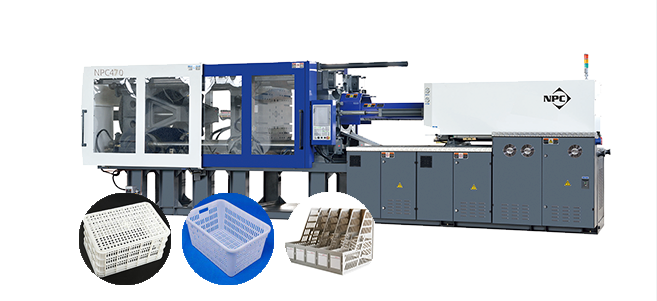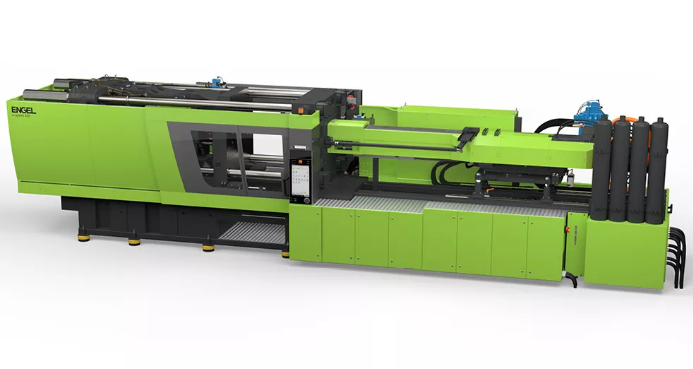Injection molding machine speeds vary, typically 60-300 mm/s for injection, with clamping speeds around 500-800 mm/s.
Defining Machine Speed in Injection Molding
Overview of Speed Parameters in Injection Molding Machines
In the realm of injection molding, machine speed encompasses several critical aspects:

Injection Speed: This parameter refers to the rate at which the machine injects molten plastic into the mold. Typically, injection speeds vary from 60 to 300 mm/s, depending on the specific machine and material.
Clamping Speed: This speed indicates how quickly the machine opens and closes the mold. For high-volume production, machines with clamping speeds ranging from 500 to 800 mm/s are ideal to minimize cycle times.
Ejection Speed: This is the rate at which the machine ejects the finished part from the mold. Precisely calibrating the ejection speed is essential to avoid damaging the part.
Each of these speed parameters plays a crucial role in the molding process, influencing factors like cycle time, part quality, and overall efficiency.
The Importance of Machine Speed in Production Efficiency
Machine speed has a direct and significant impact on production efficiency in several ways:
Cycle Time Reduction: Increasing the machine speed can drastically cut down cycle times, leading to a higher production output. For instance, doubling the injection speed from 100 mm/s to 200 mm/s can halve the filling time, thereby reducing the overall cycle time.
Energy Consumption: Adjusting machine speeds can lead to variations in energy consumption. Therefore, optimizing these speed settings is key to achieving energy efficiency, especially in large-scale production scenarios.
Cost Implications: Quicker cycle times translate to more parts produced per hour, which can effectively reduce labor and overhead costs. However, manufacturers must also consider the increased wear and tear on the machine and the risk of defects in parts produced at excessively high speeds.
Achieving optimal production efficiency requires a careful balance of speed with the specific requirements of the molding process and part design. Ignoring this balance can lead to lower part quality and higher maintenance costs.
For a deeper understanding of how machine speed affects the injection molding process, the Injection Molding Process section on Wikipedia offers extensive information.
Key Factors Affecting Injection Molding Speed
Role of Machine Size and Clamping Force
The size of the injection molding machine and its clamping force play pivotal roles in determining the molding speed. Larger machines with higher clamping force, often measured in tons, are capable of accommodating larger molds and producing larger parts. However, they generally operate at slower speeds due to the increased mass and complexity. For example, a machine with a clamping force of 2000 tons might have a slower injection and clamping speed compared to a 500-ton machine.
Higher clamping force also implies higher energy consumption. A 2000-ton machine could consume significantly more energy per cycle compared to a smaller machine. This increased consumption impacts overall production costs and efficiency.
Impact of Material Properties on Molding Speed
Material properties significantly influence the speed of the injection molding process. Materials with higher flowability, such as low-viscosity thermoplastics, can be injected more quickly than those with lower flowability. For instance, Polyethylene (PE) with a low melt flow index (MFI) might require slower injection speeds to fill the mold properly, compared to a material like Polystyrene (PS) with a higher MFI.
The material’s thermal properties also affect the cooling time, a crucial part of the molding cycle. Materials with higher thermal conductivity cool down faster, allowing for quicker cycle times. For example, Aluminum filled materials, known for their high thermal conductivity, can reduce cooling times by up to 50% compared to standard plastics.
Balancing these factors is essential for optimizing injection molding speed while maintaining part quality and production efficiency.
For more detailed information on how machine size, clamping force, and material properties affect injection molding speed, the Injection Molding Materials section on Wikipedia offers comprehensive insights.
Optimizing Injection Speed for Different Applications
Speed Considerations for Precision Parts
| Factor | Description | Impact on Speed Setting |
|---|---|---|
| Part Complexity | Precision parts often have intricate designs and tight tolerances. | Requires slower injection speeds to ensure accuracy and detail. |
| Material Properties | High-performance materials used for precision parts may have unique flow characteristics. | Adjustments in speed are necessary to accommodate specific material behaviors. |
| Mold Design | Precision parts often require complex molds with fine features. | Slower speeds are needed to prevent damage to the mold and ensure proper filling of intricate details. |
Adjusting Speed for Large Volume Production
| Factor | Description | Impact on Speed Setting |
|---|---|---|
| Production Volume | Large volume production demands fast cycle times to meet output requirements. | Higher injection speeds are set to reduce cycle times. |
| Part Simplicity | Large volume parts are often simpler in design compared to precision parts. | Allows for faster speeds without compromising part quality. |
| Energy Efficiency | Maintaining high-speed production over long periods can lead to increased energy consumption. | Balancing speed with energy efficiency is crucial to optimize cost and sustainability. |
Choosing the right injection speed is crucial for both precision part manufacturing and large volume production. For precision parts, slower speeds ensure accuracy and detail, while for large volume production, higher speeds help meet production targets.
For further insights into optimizing injection speed for different applications, the Injection Molding Process Optimization page on Wikipedia provides valuable information.
Machine Speed and Its Effect on Part Quality
Balancing Speed with Part Integrity and Aesthetics
The speed of injection molding machines plays a crucial role in the overall integrity and aesthetics of the finished parts. A precise balance is necessary to ensure optimal outcomes:

Optimal Speed Range: Different materials and part designs require specific speed ranges for best results. For instance, a speed too slow might lead to premature cooling and poor surface finish, while too fast can cause turbulence and air entrapment.
Surface Finish Quality: The speed at which the molten plastic fills the mold affects the surface finish. A well-calibrated speed ensures a smooth surface free of defects.
Dimensional Accuracy: Consistency in machine speed is key to achieving parts that are dimensionally accurate. Fluctuations in speed can lead to variations in part size and shape, affecting their functionality.
Molding machine speed has a direct impact on energy consumption and production costs. Efficiently managing speed settings can lead to significant energy savings, reducing the overall cost per part.
Speed-Related Defects in Injection Molded Parts
Inappropriate speed settings in injection molding can lead to a variety of defects in the finished parts:
Short Shots: Occur when the mold isn’t filled completely, often due to too low a speed setting.
Burn Marks: High-speed injection can cause overheating and result in burn marks on the parts.
Warpage and Distortion: If the speed is too fast, it can lead to uneven cooling and result in warpage or distortion of the part.
Managing machine speed is crucial to avoid these defects, ensuring high-quality production. While higher speeds can increase output, they must be balanced with the part requirements to maintain quality standards.
For further information on how machine speed affects part quality in injection molding, the Injection Molding Defects section on Wikipedia offers a detailed overview of potential issues and their causes.




